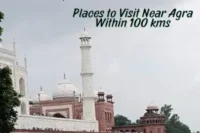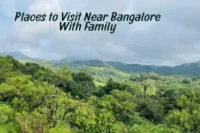Top 10 Treks in Uttarakhand to Visit in 2025
Published: 29 Aug 2025
Uttarakhand, often called the Land of Gods, is a dreamland for trekkers. Snow-covered Himalayan peaks, rolling green meadows, sacred rivers and remote mountain villages make it one of the most diverse trekking destinations in India. Whether you are a first-time hiker or an experienced adventurer, the state has trails that suit every level of explorer.
With 2025 just around the corner, more and more travelers are setting their sights on the top 10 treks in Uttarakhand. From short, easy meadow walks to challenging high-altitude passes, each trek offers something unforgettable: breathtaking views, cultural encounters or even a spiritual journey.
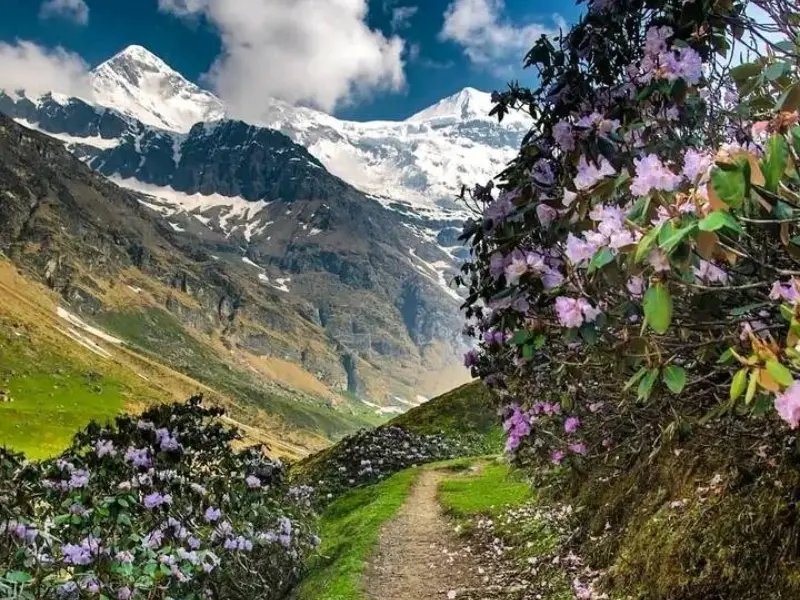
I’ve done some of these trails myself and what always strikes me is how every trek feels like stepping into a different world. One day you are crossing pine forests, the next you are standing in front of a glacier or a field of wildflowers. It’s this variety that makes Uttarakhand truly special for trekking.
In this guide, I will walk you through the top 10 best treks in Uttarakhand to visit in 2025, including seasonal tips, difficulty levels and highlights. So you can confidently plan your adventure into the Himalayas.
Why Choose Uttarakhand for Trekking?
If you have ever dreamed of trekking in the Himalayas, Uttarakhand is one of the best places to start. This northern Indian state offers a blend of natural beauty, cultural richness and accessible routes that make it a favorite for both domestic and international travelers.
1. Diverse Landscapes
From snow-capped peaks and alpine meadows to glacier-fed rivers and dense pine forests, the variety here is unmatched. Every trek shows you a different side of the Himalayas. On some trails, you will camp beside high-altitude lakes while others take you through traditional mountain villages.
2. Sacred & Cultural Significance
Uttarakhand isn’t just about scenery—it’s also called Devbhumi, the Land of Gods. Many treks pass ancient temples, sacred rivers and routes linked to Indian mythology. Walking these paths feels like following centuries of history and pilgrimage.
3. Treks for Every Level
Whether you are a beginner looking for a short, easy meadow trek like Dayara Bugyal, or an experienced trekker ready for challenges like Roopkund or Rupin Pass, there’s something for everyone. That’s what makes Uttarakhand stand out among Himalayan destinations.
4. Easy Accessibility
Unlike some remote Himalayan regions, Uttarakhand is well connected. Major trek starting points such as Dehradun, Rishikesh and Haridwar are easily accessible by road, rail and air from Delhi. This makes planning smoother, especially if you are traveling from abroad.
5. Year-Round Trekking Options
Few regions in India offer treks in every season. In Uttarakhand, you can walk on Uttarakhand snowy trails in winter, see meadows bloom in spring, enjoy high-altitude lakes in summer and trek under crisp skies in autumn.
What are the Top 10 Treks in Uttarakhand for 2025
Everyone in India or around the Globe dreamt to visit Uttarakhand because of its beauty and calmness. There are plenty of treks in Uttarakhand, knowing the top 10 helps to prepare a trekking plan that brings memories and ends up in a happy mood without last minute hassle. Let’s straight away jumps into the world of Top 10 treks in Uttarakhan and enjoy the magic of Uttarakhand:
1=> Har Ki Dun Trek – The Valley of Gods
If you are looking for a trek that blends natural beauty with ancient legends, Har Ki Dun is one of the best choices in Uttarakhand. Known as the Valley of Gods, this trail takes you through pine forests, traditional villages and wide-open meadows, all framed by the mighty Swargarohini peaks. It’s a moderate trek, perfect for beginners who want a taste of the Himalayas without pushing too far into high-altitude extremes.
Trek Highlights
- Altitude: 11,675 ft (3,559 m)
- Duration: 6–7 days
- Difficulty: Easy to Moderate
- Region: Garhwal Himalayas
- Best Season: April–June and September–November
- Starting Point: Sankri village (reachable from Dehradun)
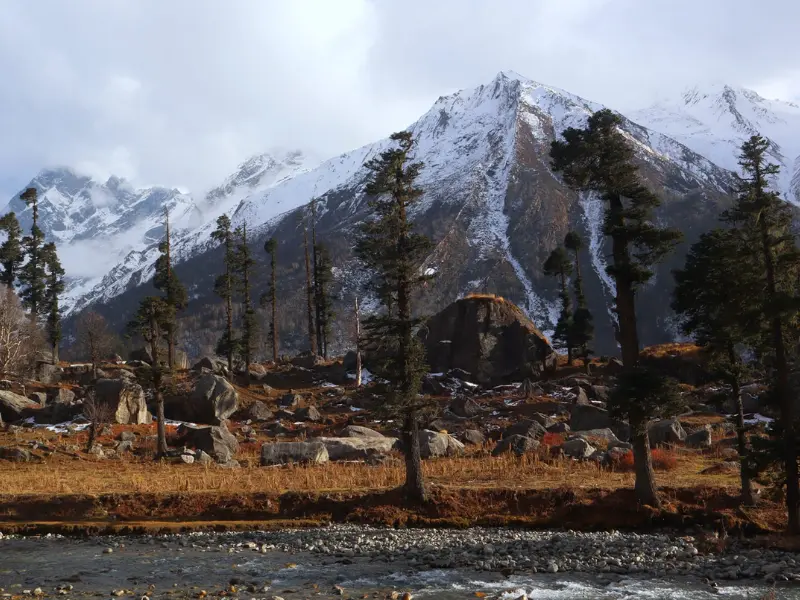
Why Choose Har Ki Dun in 2025?
- Eco-tourism projects and better village homestays make the trek more sustainable.
- Improved road connectivity to Sankri has made access easier.
- Still less crowded than popular treks like Kedarkantha, giving you a peaceful Himalayan experience.
Route Overview
The trail begins from Sankri village, winding through forests of pine, rhododendron, and deodar. You’ll pass through ancient villages like Osla and Seema, where wooden houses and temples showcase Himalayan architecture. Gradually, the path opens into the wide Har Ki Dun valley, surrounded by snow-covered mountains.
Typical Itinerary
- Day 1: Dehradun to Sankri (drive, 200 km)
- Day 2: Sankri to Taluka (drive), then trek to Seema/Osla
- Day 3: Trek from Seema/Osla to Har Ki Dun valley
- Day 4: Explore Har Ki Dun, side hikes to Jaundhar Glacier or Maninda Tal
- Day 5: Trek back to Seema/Osla
- Day 6: Seema to Taluka, drive back to Sankri
- Day 7: Return to Dehradun
Best Time to Visit
- Spring/Summer (April–June): Clear skies, blooming flowers, and pleasant weather.
- Autumn (September–November): Crisp mountain views, golden forests, ideal for photography.
- Winter (Dec–Feb): Snow trekking is possible but more challenging.
My Experience
When I first trekked Har Ki Dun, what amazed me most was the blend of scenery and culture. Sitting in Osla village, sipping tea, I felt like I had stepped back in time. If you’re a beginner, take it slow on the ascents—this trek isn’t steep, but the altitude can still surprise you.
Pro Tips
- Carry cash; ATMs aren’t available in remote villages.
- Hire a local guide—they’ll share stories of the valley’s myths and legends.
- Respect local customs, especially around temples in Osla village.
2=> Dayara Bugyal Trek – Meadows of Dreams
Dayara Bugyal is one of the most stunning meadow treks in Uttarakhand. “Bugyal” means alpine meadow, and here you’ll find endless rolling green pastures that turn into snowfields in winter. This trek is short, easy, and perfect for beginners, families, or anyone who wants a quick escape into the mountains.
Trek Highlights
- Altitude: 12,100 ft (3,690 m)
- Duration: 4–5 days
- Difficulty: Easy
- Region: Uttarkashi, Garhwal Himalayas
- Best Season: Year-round, but experiences change with each season
- Starting Point: Barsu village (reachable from Uttarkashi town)
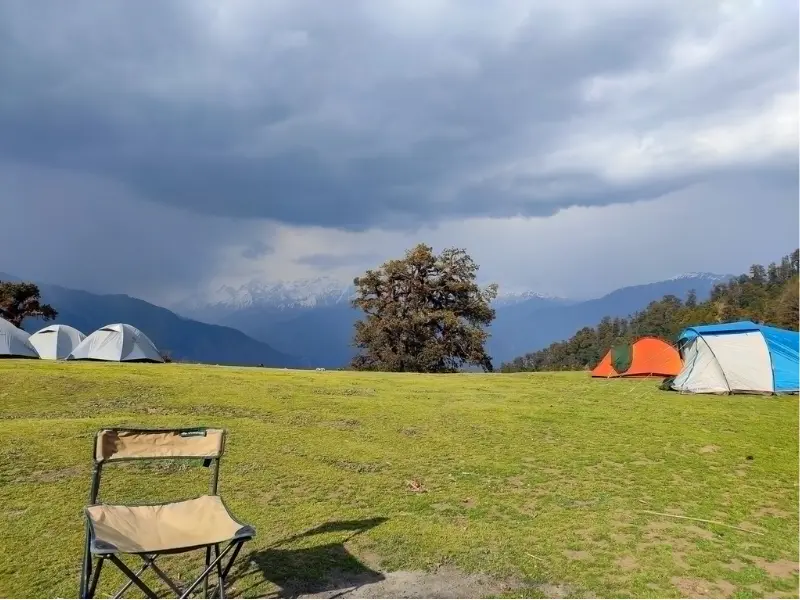
Why Choose Dayara Bugyal in 2025?
- Upgraded campsites and eco-friendly trekking practices are being introduced.
- With shorter itineraries available, it’s becoming a favorite weekend trek from Dehradun and Delhi.
- Less crowded than Kedarkantha, but equally beautiful.
Route Overview
The trek begins from Barsu village, moving gradually through oak, maple and rhododendron forests. As you climb higher, the trees open into vast grasslands—the bugyals—that stretch as far as the eye can see. On clear days, you’ll spot peaks like Bandarpoonch, Black Peak, and Draupadi ka Danda in the distance.
Typical Itinerary
- Day 1: Drive from Dehradun/Rishikesh to Barsu village
- Day 2: Trek from Barsu to Barnala Tal (camp near the small lake)
- Day 3: Trek from Barnala to Dayara Bugyal, explore the meadows
- Day 4: Descend back to Barsu and drive to Dehradun
Best Time to Visit
- Spring/Summer (April–June): Meadows bloom with wildflowers, clear mountain views.
- Monsoon (July–Sept): Meadows turn lush green, but trails can be slippery.
- Autumn (Oct–Nov): Crystal-clear skies, golden grasslands, great for photography.
- Winter (Dec–Feb): A snow trek paradise—Dayara Bugyal turns into a white wonderland.
My Experience
The first time I walked into the meadows of Dayara, I felt like I had stepped into a postcard—endless rolling fields under a blue Himalayan sky. It’s an easy trail but don’t underestimate the altitude; pace yourself and stay hydrated.
Pro Tips
- Carry a good camera—the wide landscapes are breathtaking.
- Winter trekkers should pack proper snow boots and extra warm layers.
- Don’t skip Barnala Tal; the small lake adds charm to the trail.
3=> Kuari Pass Trek – Lord Curzon’s Trail
Kuari Pass, also known as Lord Curzon’s Trail, is one of the most classic Himalayan treks in Uttarakhand. Famous for its breathtaking views of India’s second-highest peak, Nanda Devi (25,643 ft), this trek is a wonderful introduction to high-altitude trekking. It offers a mix of forests, meadows, and mountain panoramas without being too demanding, making it ideal for both beginners and experienced hikers.
Trek Highlights
- Altitude: 12,516 ft (3,815 m)
- Duration: 6–7 days
- Difficulty: Easy to Moderate
- Region: Chamoli, Garhwal Himalayas
- Best Season: March–June, September–December
- Starting Point: Joshimath (reachable from Rishikesh/Haridwar)
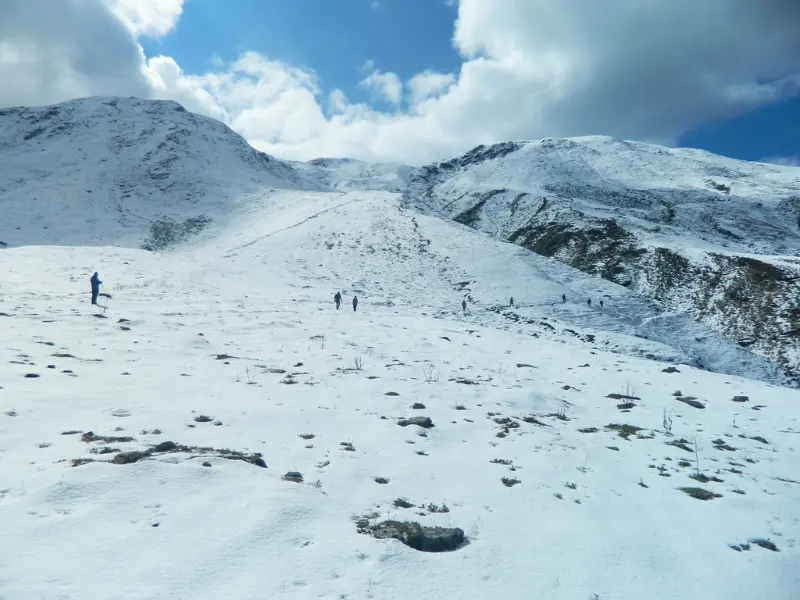
Why Choose Kuari Pass in 2025?
- Trails are being maintained by local eco-tourism groups, making the route cleaner and safer.
- 2025 treks include upgraded camping spots near Auli and Gorson Bugyal.
- Offers some of the best Himalayan views in Uttarakhand without extreme difficulty.
Route Overview
The trek usually begins at Joshimath, moving through villages like Dhak and Tugasi. The trail takes you across oak and rhododendron forests before opening into the sweeping meadows of Gorson Bugyal. From the top of Kuari Pass, you’ll see a jaw-dropping arc of peaks: Nanda Devi, Dronagiri, Kamet, Chaukhamba, and Trishul.
Typical Itinerary
- Day 1: Drive from Haridwar/Rishikesh to Joshimath
- Day 2: Drive to Dhak, trek to Tugasi or Gulling campsite
- Day 3: Trek to Khullara or Chitrakantha campsite
- Day 4: Trek to Kuari Pass, return to Khullara
- Day 5: Trek down to Dhak, drive back to Joshimath
- Day 6: Return to Rishikesh/Haridwar
Best Time to Visit
- Spring (Mar–Jun): Clear views, blooming rhododendrons, pleasant weather.
- Autumn (Sep–Dec): Crisp skies, snow-dusted peaks, fewer crowds.
- Winter (Jan–Feb): Heavy snow makes it a thrilling but more challenging trek.
My Experience
When I reached Kuari Pass, the sheer sight of Nanda Devi rising above the clouds left me speechless. It felt like standing in front of a giant wall of peaks. If you love photography, carry a wide-angle lens—this trek has some of the best panoramic views I’ve ever seen in Uttarakhand.
Pro Tips
- Acclimatize in Joshimath before starting the trek.
- Carry trekking poles—they help during steep ascents and snowy patches.
- If you have time, take the cable car at Auli before or after the trek for more stunning views.
4=> Kedarkantha Trek – A Winter Wonderland
Kedarkantha is one of the most loved winter treks in Uttarakhand. Famous for its snow-covered trails and a stunning 360° view of Himalayan peaks from the summit, this trek is perfect if you want to experience the magic of the mountains in winter. It’s often the first snow trek chosen by beginners, and it never disappoints.
Trek Highlights
- Altitude: 12,500 ft (3,810 m)
- Duration: 5–6 days
- Difficulty: Easy to Moderate
- Region: Uttarkashi, Garhwal Himalayas
- Best Season: December–April
- Starting Point: Sankri village
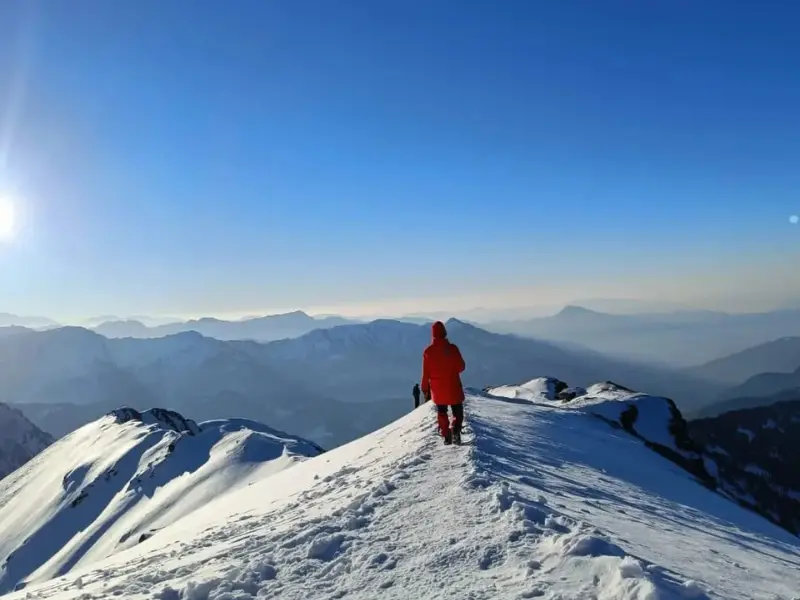
Why Choose Kedarkantha in 2025?
- Still one of the most popular winter treks in Uttarakhand for beginners.
- In 2025, improved facilities in Sankri and regulated camping zones are helping balance tourism with sustainability.
- Offers reliable snow even in late March, giving trekkers a long snow season.
Route Overview
The trek begins at Sankri village, winding through pine and oak forests before reaching snowy clearings. Campsites like Juda Ka Talab and Kedarkantha Base are known for their beauty. On summit day, you climb in the early hours to catch sunrise at the peak, with views stretching across Swargarohini, Black Peak, and Bandarpoonch.
Typical Itinerary
- Day 1: Drive from Dehradun to Sankri (200 km)
- Day 2: Sankri to Juda Ka Talab campsite
- Day 3: Trek to Kedarkantha Base camp
- Day 4: Summit Kedarkantha peak, return to base or Hargaon camp
- Day 5: Descend to Sankri, drive back to Dehradun
Best Time to Visit
- Winter (Dec–Feb): Peak snow season, magical landscapes.
- Spring (Mar–Apr): Snow still present but milder weather, good for beginners.
My Experience
When I reached the summit at dawn, the horizon lit up in shades of gold and pink—it’s one of those views you carry with you forever. The climb is steady but can feel tough in snow, so I found trekking poles very helpful.
Pro Tips
- Carry good quality snow boots and gaiters.
- Book early—Kedarkantha is popular and campsites can get crowded in peak season.
- Start your summit push before 4 AM for the best sunrise views.
5=> Roopkund Trek – The Mystery Lake
Roopkund is one of the most fascinating treks in Uttarakhand, often called the “Skeleton Lake Trek” because of the hundreds of human skeletons found at its glacial lake. While restrictions have been in place in recent years, it still holds legendary status among trekkers. If access fully reopens in 2025, Roopkund will once again become one of the top challenging treks in Uttarakhand.
Trek Highlights
- Altitude: 15,750 ft (4,800 m)
- Duration: 7–8 days
- Difficulty: Moderate to Difficult
- Region: Chamoli, Garhwal Himalayas
- Best Season: May–June, September–October
- Starting Point: Lohajung village
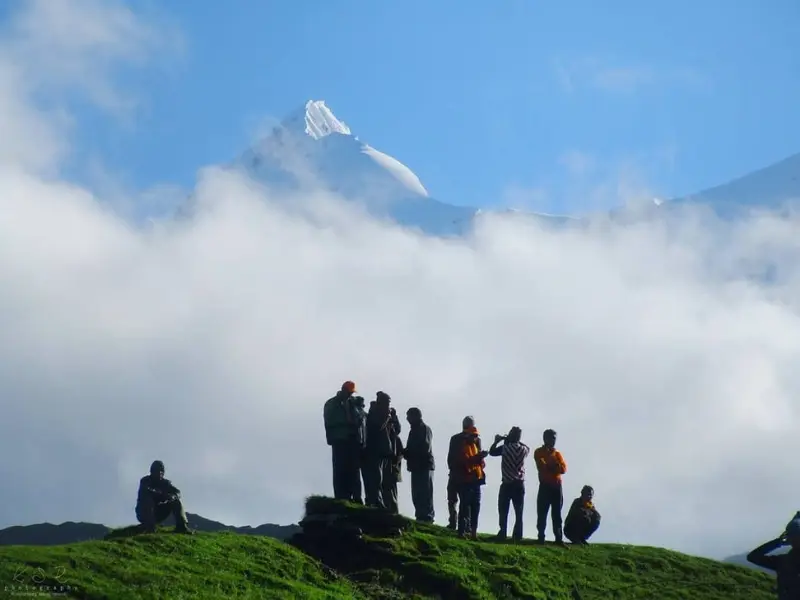
Why Choose Roopkund in 2025?
- Possible reopening with better safety regulations and eco-tourism focus.
- A trek that combines adventure, mystery, and Himalayan beauty.
- High chance to see snow even in late spring.
Route Overview
The trail begins at Lohajung, passing through dense forests, riverside camps, and alpine meadows like Ali Bugyal and Bedni Bugyal—two of the most beautiful in Uttarakhand. The final climb to Roopkund is steep, taking you to the glacial lake surrounded by high peaks, including Trishul and Nanda Ghunti.
Typical Itinerary
- Day 1: Drive from Rishikesh/Dehradun to Lohajung
- Day 2: Trek to Didna or Wan village
- Day 3: Trek to Ali Bugyal and Bedni Bugyal
- Day 4: Trek to Patar Nachauni or Bhagwabasa
- Day 5: Summit trek to Roopkund Lake, return to Bhagwabasa
- Day 6: Descend back to Bedni Bugyal or Lohajung
- Day 7–8: Return journey to Rishikesh/Dehradun
Best Time to Visit
- Summer (May–June): Snow starts melting, lake becomes accessible.
- Autumn (Sep–Oct): Clear skies, sharp views of Trishul and Nanda Ghunti.
My Experience
I remember standing at Bedni Bugyal, one of the largest high-altitude meadows, with endless grasslands stretching under the blue sky—it felt like the perfect pause before the final push. Roopkund is demanding, especially near the summit, but every step feels rewarding.
Pro Tips
- Prepare well for altitude—this trek goes above 15,000 ft.
- Hire an experienced guide; the final stretch can be tricky.
- Pack extra warm gear—even summer nights are freezing.
6=> Brahmatal Trek – A Hidden Gem in Winter
The Brahmatal Trek has quickly become one of the most loved treks in Uttarakhand, especially for winter trekking. Known for its frozen alpine lakes, panoramic views of Trishul and Nanda Ghunti, and snow-covered trails, it’s a perfect alternative to the crowded Kedarkantha trek. If you’re looking for an offbeat but stunning Himalayan experience in 2025, Brahmatal should be on your list.
Trek Highlights
- Altitude: 12,250 ft (3,735 m)
- Duration: 5–6 days
- Difficulty: Easy to Moderate
- Region: Chamoli, Garhwal Himalayas
- Best Season: December–March (winter snow), April–May for spring meadows
- Starting Point: Lohajung village
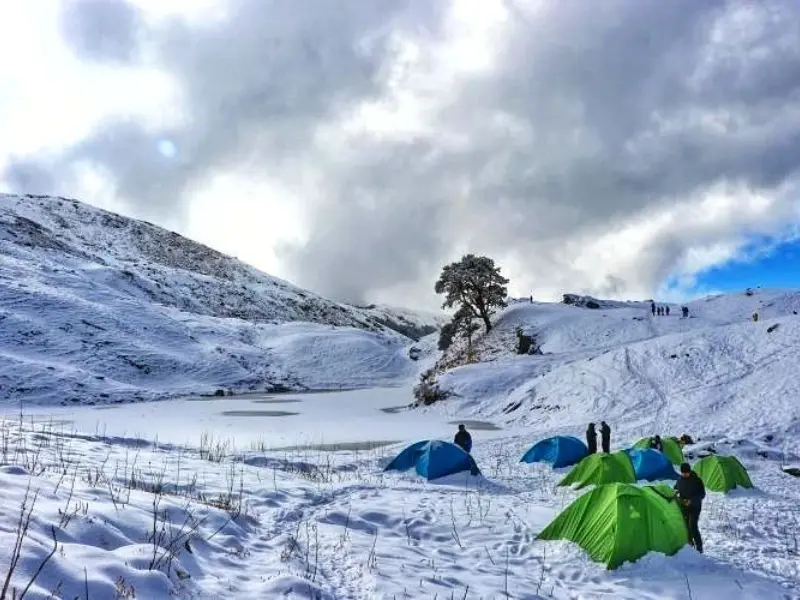
Why Choose Brahmatal in 2025?
- Rising in popularity as a less crowded winter trek compared to Kedarkantha.
- Trekking organizations are promoting eco-friendly camping and waste management.
- Ideal for those who want snow without extreme difficulty.
Route Overview
The trek starts from Lohajung village, gradually climbing through oak and rhododendron forests. The highlight is reaching Brahmatal Lake, which often freezes completely in winter, creating surreal reflections of the surrounding peaks. From Brahmatal Top, trekkers get some of the best views of Mt. Trishul and Mt. Nanda Ghunti.
Typical Itinerary
- Day 1: Drive from Rishikesh/Dehradun to Lohajung
- Day 2: Trek from Lohajung to Bekaltal campsite
- Day 3: Trek from Bekaltal to Brahmatal campsite
- Day 4: Trek to Brahmatal Top and return to campsite
- Day 5: Descend to Lohajung
- Day 6: Drive back to Rishikesh/Dehradun
Best Time to Visit
- Winter (Dec–Mar): Best for snow trekking and frozen lakes.
- Spring (Apr–May): Meadows with rhododendrons, clearer skies.
My Experience
What struck me most on this trek was the silence of the frozen lake under a starlit sky—it felt almost otherworldly. The climb is steady, not too steep, which makes it manageable even for first-time trekkers.
Pro Tips
- Pack snow gear and extra socks—snow can get knee-deep in January.
- Stay hydrated—even in the cold, dehydration is common.
- Avoid littering near the lakes—they are sacred to locals.
7=> Valley of Flowers & Hemkund Sahib – A Himalayan Paradise
The Valley of Flowers Trek is one of the most iconic treks in Uttarakhand and a UNESCO World Heritage Site. Famous for its alpine meadows bursting with wildflowers during the monsoon trekking, it feels like walking through a living painting. Paired with a visit to Hemkund Sahib, a high-altitude Sikh pilgrimage site, this trek blends natural beauty with deep spiritual significance.
Trek Highlights
- Altitude: Valley of Flowers – 12,000 ft (3,658 m), Hemkund Sahib – 14,100 ft (4,298 m)
- Duration: 5–6 days
- Difficulty: Easy to Moderate
- Region: Chamoli, Garhwal Himalayas
- Best Season: July–September (peak blooming season)
- Starting Point: Govindghat (near Joshimath)
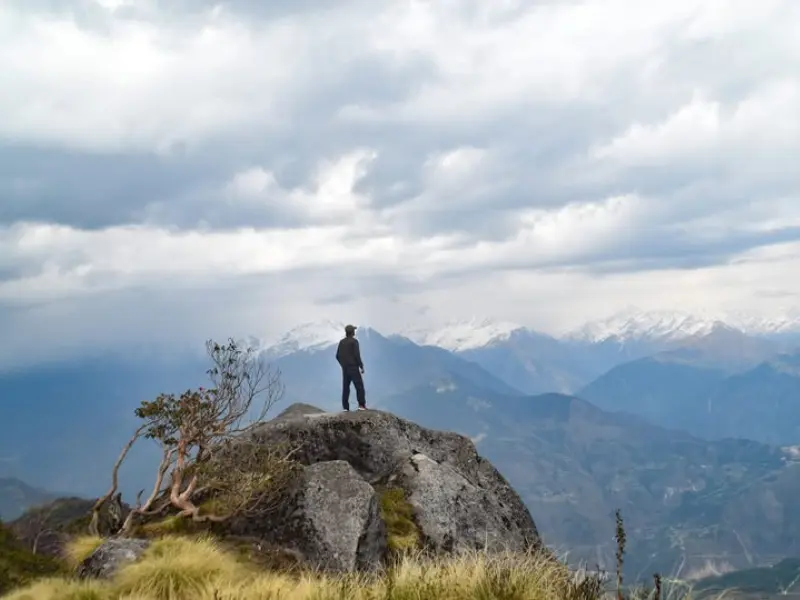
Why Choose Valley of Flowers in 2025?
- Remains one of the top 10 best treks in Uttarakhand for international travelers.
- In 2025, improved trail maintenance and eco-tourism efforts will help preserve the fragile ecosystem.
- A chance to experience both adventure and spirituality in one journey.
Route Overview
The trek begins at Govindghat, following a gradual trail to Ghangaria village, the base for both Valley of Flowers and Hemkund Sahib. From here, one trail leads to the flower-filled valley, while another climbs steeply to Hemkund Sahib, a serene glacial lake surrounded by mountains.
Typical Itinerary
- Day 1: Drive from Rishikesh/Haridwar to Joshimath/Govindghat
- Day 2: Trek from Govindghat to Ghangaria
- Day 3: Trek from Ghangaria to Valley of Flowers, return to Ghangaria
- Day 4: Trek from Ghangaria to Hemkund Sahib, return to Ghangaria
- Day 5: Descend to Govindghat, drive to Joshimath
- Day 6: Return to Rishikesh/Haridwar
Best Time to Visit
- Monsoon (July–Sept): Meadows are at their peak bloom with hundreds of flower species.
- Post-monsoon (late Sept): Clear skies, fewer flowers but stunning Himalayan views.
My Experience & Tips
When I entered the valley for the first time, I was struck by the sheer variety of colors—blue primulas, pink geraniums, yellow poppies. It felt unreal, like a secret garden hidden in the mountains. The climb to Hemkund Sahib was challenging, but sipping hot chai at the gurudwara at 14,000 ft is an experience I’ll never forget.
Pro Tips
- Carry a poncho or rain gear—the valley is best seen during the monsoon.
- Start the Hemkund Sahib trek early—it’s a steep ascent and weather changes quickly.
- Book accommodation at Ghangaria in advance—it’s the only base village and gets crowded.
8=> Rupin Pass Trek – A Cross-State Adventure
The Rupin Pass Trek is one of the most dramatic and adventurous trails in the Indian Himalayas. Starting in Uttarakhand and ending in Himachal Pradesh, it offers a constantly changing landscape—deep forests, hanging villages, roaring waterfalls, alpine meadows, and finally, a thrilling climb to the Rupin Pass at 15,250 ft. It’s a trek that feels like several adventures rolled into one.
Trek Highlights
- Altitude: 15,250 ft (4,648 m)
- Duration: 7–8 days
- Difficulty: Moderate to Difficult
- Region: Starts in Uttarakhand (Dhaula) and ends in Himachal (Sangla)
- Best Season: May–June, September–October
- Starting Point: Dhaula village, Uttarakhand
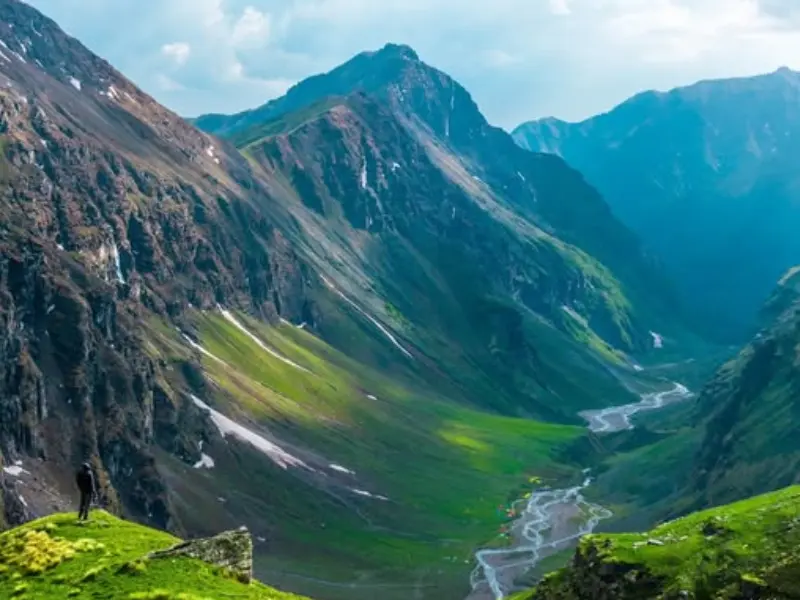
Why Choose Rupin Pass in 2025?
- Still one of the most adventurous Himalayan treks with varied terrain.
- Perfect for trekkers looking for a challenging alternative to Roopkund.
- Organized groups are offering better logistics for the cross-state route in 2025.
Route Overview
The trek begins at Dhaula village in Uttarakhand and winds through hanging villages like Jhaka, known as the “hanging village” because of its cliffside houses. Along the way, you’ll cross rivers, camp in alpine meadows, and climb snow bridges before tackling the steep ascent to Rupin Pass, which opens into Himachal’s Sangla Valley.
Typical Itinerary
- Day 1: Drive from Dehradun to Dhaula
- Day 2: Trek to Sewa village
- Day 3: Trek to Jhaka (the hanging village)
- Day 4: Trek to Saruwas Thatch
- Day 5: Trek to Dhanderas Thatch
- Day 6: Trek to Upper Waterfall Camp
- Day 7: Climb to Rupin Pass and descend to Ronti Gad
- Day 8: Trek to Sangla, drive to Shimla or Dehradun
Best Time to Visit
- Summer (May–June): Snowfields at higher camps, meadows in bloom.
- Autumn (Sep–Oct): Clear skies, stable weather, golden valleys.
My Experience
Crossing the giant waterfall campsite on this trek was unforgettable—the roar of the Rupin River echoing across the valley while we pitched tents nearby. The pass climb was steep and exhausting, but the view into Sangla Valley was worth every step.
Pro Tips
- Fitness is key—train well before attempting Rupin Pass.
- Carry microspikes/crampons in early summer when snow is heavy.
- Since it ends in Himachal, plan your return transport in advance.
9=> Gaumukh Tapovan Trek – Journey to the Source of the Ganges
The Gaumukh Tapovan Trek is a legendary trail in Uttarakhand that takes you to the sacred Gaumukh Glacier, the source of the holy Ganga River. Beyond Gaumukh, the trail climbs to Tapovan, a high-altitude meadow that offers jaw-dropping views of Mt. Shivling, one of the most beautiful peaks in the Himalayas. This trek is a perfect mix of spirituality, adventure, and Himalayan grandeur.
Trek Highlights
- Altitude: 14,600 ft (4,450 m)
- Duration: 7–8 days
- Difficulty: Moderate
- Region: Gangotri National Park, Uttarkashi
- Best Season: May–June, September–October
- Starting Point: Gangotri town
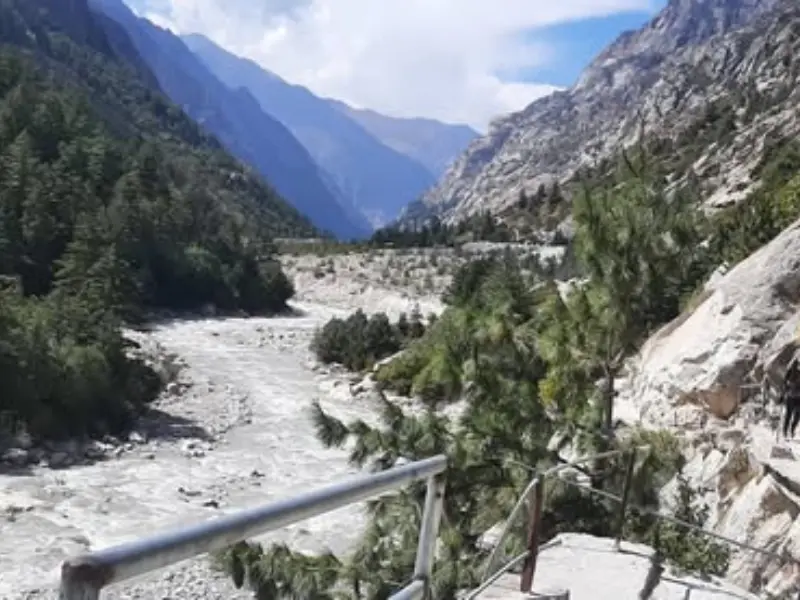
Why Choose Gaumukh Tapovan in 2025?
- A spiritual and adventurous trek rolled into one.
- The trail has been reopened with stricter permits, making 2025 a great time to experience it with fewer crowds.
- Strong eco-regulations in Gangotri National Park mean the area remains pristine.
Route Overview
The trek begins at Gangotri, one of the Char Dham pilgrimage sites, and follows the Bhagirathi River upstream through pine forests and alpine terrain. The trail reaches Gaumukh Glacier, shaped like a cow’s mouth, and continues with a steep climb to Tapovan, a meadow with stunning mountain backdrops.
Typical Itinerary
- Day 1: Drive from Rishikesh/Dehradun to Gangotri
- Day 2: Acclimatization at Gangotri, local exploration
- Day 3: Trek from Gangotri to Chirbasa
- Day 4: Trek from Chirbasa to Bhojbasa
- Day 5: Trek from Bhojbasa to Gaumukh, then climb to Tapovan
- Day 6: Explore Tapovan, return to Bhojbasa
- Day 7: Trek back to Gangotri
- Day 8: Drive back to Rishikesh/Dehradun
Best Time to Visit
- Summer (May–June): Pleasant weather, clear mountain views.
- Autumn (Sep–Oct): Post-monsoon clarity, snow patches on higher reaches.
My Experience
Standing at Gaumukh and watching the Ganga emerge from the glacier is one of the most humbling experiences I’ve had in the mountains. Tapovan, with its wide meadows and massive peaks around, felt like nature’s amphitheater.
Pro Tips
- A permit from the forest department is required—apply early.
- Start your trek early each day to avoid afternoon weather shifts.
- Respect the sanctity of the site—locals see Gaumukh as deeply sacred.
10=> Panch Kedar Trek – A Spiritual Himalayan Circuit
The Panch Kedar Trek is not just a Himalayan adventure. It’s also a deep spiritual journey. Covering five ancient Shiva temples tucked into Uttarakhand’s mountains—Kedarnath, Tungnath, Rudranath, Madhyamaheshwar and Kalpeshwar—this trek combines mythology, nature and raw Himalayan beauty. It’s longer than most treks, but for those seeking both challenge and meaning, it’s truly unforgettable.
Trek Highlights
- Altitude: Highest point at Tungnath – 12,073 ft (3,680 m)
- Duration: 15–17 days (full circuit)
- Difficulty: Moderate to Difficult (depends on chosen route)
- Region: Garhwal Himalayas
- Best Season: May–June, September–October
- Starting Point: Rishikesh/Haridwar
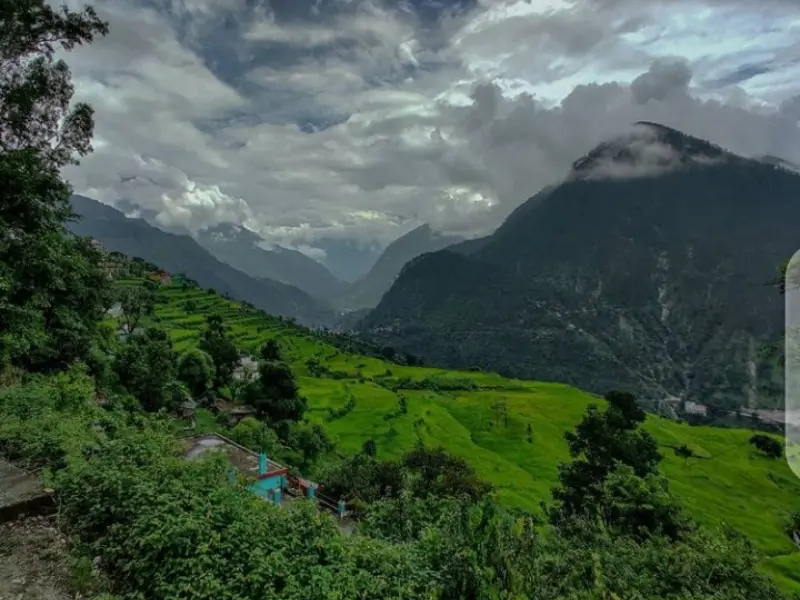
Why Choose Panch Kedar in 2025?
- A blend of pilgrimage and trekking—ideal for spiritual seekers.
- Improved trail infrastructure around Kedarnath and Tungnath after the 2023–24 renovations makes access smoother.
- One of the best treks in Uttarakhand 2025 for those seeking a unique, offbeat journey.
Route Overview
The Panch Kedar circuit connects five sacred shrines dedicated to Lord Shiva. Legend says these shrines mark the places where different parts of Shiva’s body appeared after the Mahabharata war. The route passes through forests, remote villages, alpine meadows, and temples that seem frozen in time.
Typical Itinerary (Full Circuit)
- Day 1–2: Rishikesh to Kedarnath trek via Gaurikund
- Day 3–5: Trek to Tungnath & Chandrashila Peak
- Day 6–8: Trek to Rudranath (through dense forests and meadows)
- Day 9–11: Trek to Madhyamaheshwar (beautiful meadows, peaceful temple site)
- Day 12–14: Trek to Kalpeshwar (the only Panch Kedar accessible year-round)
- Day 15–17: Return journey to Rishikesh
Best Time to Visit
- Summer (May–June): Comfortable trekking weather, temple routes open.
- Autumn (Sep–Oct): Clear skies, less crowded than summer.
My Experience & Tips
The Panch Kedar trek gave me a sense of both adventure and peace. Climbing to Tungnath, the highest Shiva temple in the world, and watching sunrise from Chandrashila Peak was a highlight. But what stayed with me most were the quiet moments in remote shrines like Rudranath, surrounded by forests and silence.
Pro Tips
- Not all trekkers do the full circuit—choose a section based on time and fitness.
- Hire a local guide; trails between Rudranath and Madhyamaheshwar can be tricky.
- Carry both trekking and temple essentials (like a light scarf or shawl for offerings).
Best Time for Trekking in Uttarakhand – Seasonal Guide
Choosing the right season is one of the most important steps in planning a successful trek in Uttarakhand. Each season transforms the Himalayas in a unique way, offering very different experiences. Here’s a breakdown to help you pick the best time based on trek difficulty and preferences.
Spring & Summer Treks (March – June)
- What to Expect: Blooming rhododendrons, pleasant days, snow still lingering at higher altitudes. Rivers and waterfalls are full, meadows turn green.
- Best for: First-time trekkers, nature lovers, and those who want snow without extreme cold.
- Recommended Easy Treks:
- Dayara Bugyal
- Chopta–Tungnath–Chandrashila
- Dayara Bugyal
- Recommended Moderate Treks:
- Har Ki Doon
- Kuari Pass
- Har Ki Doon
- Recommended Difficult Treks:
- Rupin Pass (May–June)
- Gaumukh Tapovan
- Rupin Pass (May–June)
👉 I love trekking in May—the balance of snow and greenery is just magical.
Monsoon Treks (July – August)
- What to Expect: Lush greenery, alpine flowers in full bloom but also heavy rainfall and risk of landslides. Not all treks are safe.
- Best for: Valley treks and spiritual trails that come alive in the rains.
- Recommended Easy Treks:
- Valley of Flowers (absolute best time – July & August)
- Valley of Flowers (absolute best time – July & August)
- Recommended Moderate Treks:
- Hemkund Sahib (combine with Valley of Flowers)
- Hemkund Sahib (combine with Valley of Flowers)
- Treks to Avoid: High-altitude passes like Rupin Pass, Bali Pass, or Kalindi Khal due to risk of landslides and flooding.
👉 Walking through the Valley of Flowers in August felt like stepping into a living painting.
Autumn Treks (September – November)
- What to Expect: Crystal-clear skies, crisp weather, post-monsoon greenery, golden valleys. Snow begins to return at higher camps in November.
- Best for: Photographers, experienced trekkers, and those who prefer stable weather.
- Recommended Easy Treks:
- Chopta–Chandrashila (brilliant autumn sunrises)
- Chopta–Chandrashila (brilliant autumn sunrises)
- Recommended Moderate Treks:
- Brahmatal
- Har Ki Doon
- Brahmatal
- Recommended Difficult Treks:
- Rupin Pass (Sept–Oct)
- Gaumukh Tapovan
- Rupin Pass (Sept–Oct)
👉 October skies in Uttarakhand are some of the clearest I’ve ever seen, perfect for mountain views.
Winter Treks (December – February)
- What to Expect: Snow-covered trails, freezing nights and quiet trails with fewer trekkers. Only selected treks remain open and safe.
- Best for: Snow lovers and those looking for short but adventurous treks.
- Recommended Easy Treks:
- Dayara Bugyal (snow meadows)
- Kedarkantha (popular winter trek, often called the “Queen of Winter Treks”)
- Dayara Bugyal (snow meadows)
- Recommended Moderate Treks:
- Brahmatal (best in Jan–Feb for snowy campsites and ridge walks)
- Brahmatal (best in Jan–Feb for snowy campsites and ridge walks)
- Treks to Avoid: High-altitude passes and glacier treks are usually closed.
👉 Camping in snow at Kedarkantha in January was cold but unforgettable, the stars looked impossibly close.
Conclusion
Uttarakhand truly lives up to its name, “Land of the Gods”, with landscapes that range from rolling alpine meadows to towering snow peaks and serene glacial lakes. Whether you are looking for a short beginner-friendly hike like Dayara Bugyal, a spiritual journey such as the Panch Kedar Trek, or a challenging high-altitude adventure like Gaumukh Tapovan, the state has something for every traveler.
In 2025, with better infrastructure, sustainable trekking practices and increasing awareness about eco-friendly travel, it’s the perfect time to explore these Himalayan trails. The key is to match your trek with the right season, difficulty level and personal interest—be it snow, flowers or spirituality.
👉 So, which trek in Uttarakhand will you choose first—snowy Kedarkantha, mystical Roopkund or the floral paradise of Valley of Flowers? Wherever you go, the Himalayas are sure to leave you humbled and inspired.
Related Queries
Here are frequently asked questions about top treks in Uttarakhand:
The top 10 treks in Uttarakhand for 2025 include Har Ki Doon, Dayara Bugyal, Kuari Pass, Kedarkantha, Valley of Flowers, Brahmatal, Roopkund, Gaumukh Tapovan, Rupin Pass and Panch Kedar Trek. Each offers a unique mix of meadows, glaciers, high passes and sacred temples, suitable for different fitness levels.
The best time to trek in Uttarakhand depends on the season. Uttarakhand Summer Treks are great for beginners with clear trails and greenery, monsoon (July–August) is ideal for the Valley of Flowers, autumn (September–November) brings clear skies and mountain views, while winter (December–February) is perfect for snow treks like Kedarkantha and Brahmatal.
For beginners, easy to moderate treks like Dayara Bugyal, Kedarkantha and Chopta–Tungnath–Chandrashila are the best choices. These treks are short, scenic and offer rewarding Himalayan views without extreme altitude challenges.
Yes, some treks in Uttarakhand require permits, especially those in protected areas like Valley of Flowers, Nanda Devi Biosphere and Gaumukh Tapovan. Permits can be arranged through local authorities or registered trekking agencies. It’s always best to confirm this while planning.
The difficulty varies. Treks like Dayara Bugyal and Kedarkantha are easy and beginner-friendly. Har Ki Doon and Kuari Pass fall in the moderate category. Challenging treks include Rupin Pass, Gaumukh Tapovan and Roopkund, which require fitness and prior experience.
Yes, solo trekking is possible on popular trails like Kedarkantha, Har Ki Doon and Dayara Bugyal. However, for remote or high-altitude treks such as Gaumukh Tapovan or Rupin Pass, it’s safer to go with a guide or group due to tricky terrain and changing weather.

- Be Respectful
- Stay Relevant
- Stay Positive
- True Feedback
- Encourage Discussion
- Avoid Spamming
- No Fake News
- Don't Copy-Paste
- No Personal Attacks



- Be Respectful
- Stay Relevant
- Stay Positive
- True Feedback
- Encourage Discussion
- Avoid Spamming
- No Fake News
- Don't Copy-Paste
- No Personal Attacks


